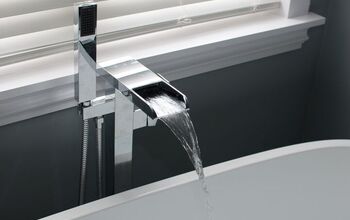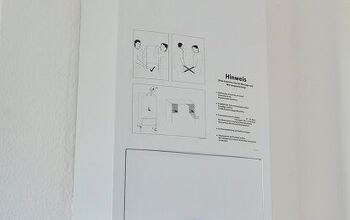What Are The Pros And Cons Of A Hot Water Recirculating Pump?

If you ask anyone who’s hip to the jive, going green is important. Everything from water conservation to creating new ways to be energy efficient is on the table. That’s why more people are starting to look at unusual ways to save money on the basics. That’s why people are starting to install hot water recirculating pumps. But, are they really worth it?
Hot water recirculating pumps can drastically cut down the time you have to wait for hot water. They also can save homes anywhere from $50 to $100 per year. Unfortunately, installation can be pricey and some hot water recirculating pumps are also prone to breakage.
Wanting to have a more water-efficient lifestyle is an admirable trait, but that doesn’t mean that every “green” item is going to be worth it. Wondering if a hot water recirculating pump is worth your time? Here’s the truth behind the hype.
Do You Need a Heating and Cooling Contractor?
Get free, zero-commitment quotes from pro contractors near you.

What Does A Hot Water Recirculating Pump Do?
Tired of waiting for your water heater to heat your water? You might want one of these. A hot water recirculating pump is a device that sends unused hot water back to your boiler if it isn’t sent to the pipes. In other words, it turns your hot water circuit into a closed loop that can be opened whenever you need some hot water.
This conserves water and also can help conserve energy. As the price of hot water increases nationwide, people are expected to get more interested in this conveniently cool addition to their home’s water system.
What Are The Perks Of A Hot Water Recirculating Pump?
If nothing else, people are wise to want to snap this up for their homes, if only for the many perks it can offer. The biggest draws would make any savvy homeowner think about adding one to their place.
Lower Bills
Did you notice the price of electricity impacting your water heating bills? If so, you’re not alone. A hot water recirculating pump can help you save on both your energy and water bills, making it one of the most cost-efficient ways to go green over the long term. It’s a gift that keeps on giving.
A typical hot water recirculating pump will only cost $200 to $250, but can easily save you $50 per year. This means that you can expect this investment to pay for itself within a matter of years. Moreover, it’s an easy install so you don’t have to pay a contractor to install it. You can do it all on your own.
Fast Hot Water
Did you ever notice how annoying it can be to have to wait a minute or so, just so that you can get some decently warm water? That’s a big reason why people tend to want hot water recirculating pumps in their homes. That stuff just doesn’t happen when you get a good pump. That’s literally what it’s built to prevent!
In a typical water heating circuit, you will need to wait a bit for your water to heat up. Since hot water recirculating pumps turn your hot water system into a closed circuit when you’re not using it, you don’t have to wait for water to heat up. This leads to faster times for hot water access throughout your home.
Water Efficiency
Every American household wastes an average of 11,461 gallons per year, which is why many parts of the country are now putting water restrictions during times of drought. Thankfully, water efficiency is something that can be improved through the use of a hot water recirculating pump. While it may not be very efficient at saving water, it still makes a green impact overall.
What Are The Pitfalls Of A Hot Water Recirculating Pump?
While hot water recirculating pumps are awesome in their own right, they are not exactly the most efficient ways to make sure that you get the savings that you want. Pumps, though excellent for a wide range of things, do have their pitfalls. Some of the biggest ones include…
Prone To Breakage
Though this is not always the case, some hot water recirculating pumps have a tendency of breaking. You may need to replace them sooner than you’d hope, and this can be annoying. While it’s not as bad as having to replace a water heater, it still happens to be yet another thing that you will have to repair.
If you want to get a hot water recirculating pump, you should make an effort to get a high-quality one. This will ensure that you have the lowest chance of having to deal with frequent breaks.
Noise Complaints
As the years pass, the hot water recirculating pump you install might start to get noisier than it once was. If this is the case with your pump, then you may need to deal with a loud humming or buzzing noise. While there’s no way to fix an increasingly loud pump, replacement is often good enough.
The good news is that recirculating pumps are now being made to be quieter. This means that you probably won’t deal with the same level of noise as what current owners are dealing with.
Not Always Useful
If you’re looking to cut down on utility bills in a place like San Antonio, then a hot water recirculating pump is gonna be great. Unfortunately, they are not great if you want to live in a place like Maine. The truth is that cold weather has a huge impact on recirculating pumps and their ability to keep water warm.
It’s not uncommon to hear of people turning on a faucet with a hot water recirculating pump, only to get lukewarm water instead of hot. In areas where the weather gets bitingly cold, it may not even actually heat your water at all. That’s why you may need additional insulation in order to keep a recirculating pump working.
Power Thirsty
It’s important to remember that every hot water recirculating pump will need some electricity to work. This can eat into the savings you get, and it also means that you will need an outlet where you can plug the pump in. Both of these things can be a bit of a nuisance, though the overall savings still end up paying for themselves in the long run.
The good news is that many, if not most, recirculating pumps now run on timers. This can reduce the amount of energy that you need to spend over the course of a year. If you want hot water when the timer isn’t on, you may need to wait a short while to get the water to heat up. So, while it’s not a perfect fix, it can help decrease your bills.
Should You Get A Hot Water Recirculating Pump?
In most cases, a hot water recirculating pump won’t be a bad idea. In fact, there’s very little worry about as far as losing out on your investment. Since this project is fairly easy to do, you don’t have to worry about dealing with a large loss. The potential pitfalls do not outweigh all the benefits a good pump can offer your home.
At the worst, you might have lukewarm water or be out $200. At best, you have a pump that makes getting hot water fast a cinch, and that also happens to save you money on water bills. If you’re a Californian resident, then chances are that you’ll adore having this, simply because of the rapidly-increasing price of water.
Do You Need a Heating and Cooling Contractor?
Get free, zero-commitment quotes from pro contractors near you.

Related Questions
How big are hot water recirculating pumps, anyway?
Most people don’t realize this when they first start reading up on recirculating pumps, but a typical hot water recirculating pump is fairly compact. A typical hot water recirculating pump is small enough to fit underneath a sink without jeopardizing your ability to store other goods in there. So if you were worried about spacing issues, don’t be. It’ll fit.
Where do you install a hot water recirculating pump?
There are two main areas where you will install a hot water recirculating pump. The most common area is near your heater’s hot water discharge line. This is where the actual pump goes. You also will need to install a sensor valve that’s on the supply lines farthest away from the water heater. This detects whether or not you actually need more hot water.
Why is my hot water recirculating pump not working?
Assuming that you just installed it in your home, the biggest issue that you might be dealing with is a low flow rate. Simply put, this suggests that the pump is not strong enough to handle the plumbing system your home has. If you owned the pump for several years, then you might just have a pump that has lived past its prime and needs to be replaced.There are only a handful of reasons why this simple tool might not be working, so if you are open to trying to fix it, try to troubleshoot it. Chances are that you’ll be able to determine the cause of the issue soon enough.

Ossiana Tepfenhart is an expert writer, focusing on interior design and general home tips. Writing is her life, and it's what she does best. Her interests include art and real estate investments.
More by Ossiana Tepfenhart
















![Cost To Drill A Well [Pricing Per Foot & Cost By State]](https://cdn-fastly.upgradedhome.com/media/2023/07/31/9074980/cost-to-drill-a-well-pricing-per-foot-cost-by-state.jpg?size=350x220)










![12 Washing Machine Brands to Avoid [with Recall Data]](https://cdn-fastly.upgradedhome.com/media/2023/07/31/9075781/12-washing-machine-brands-to-avoid-with-recall-data.jpg?size=350x220)